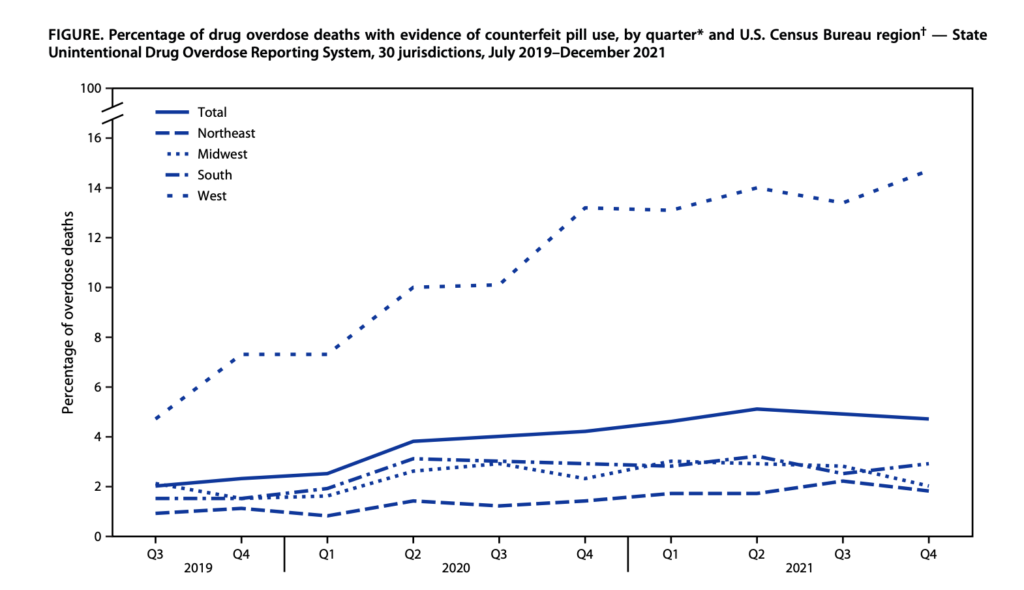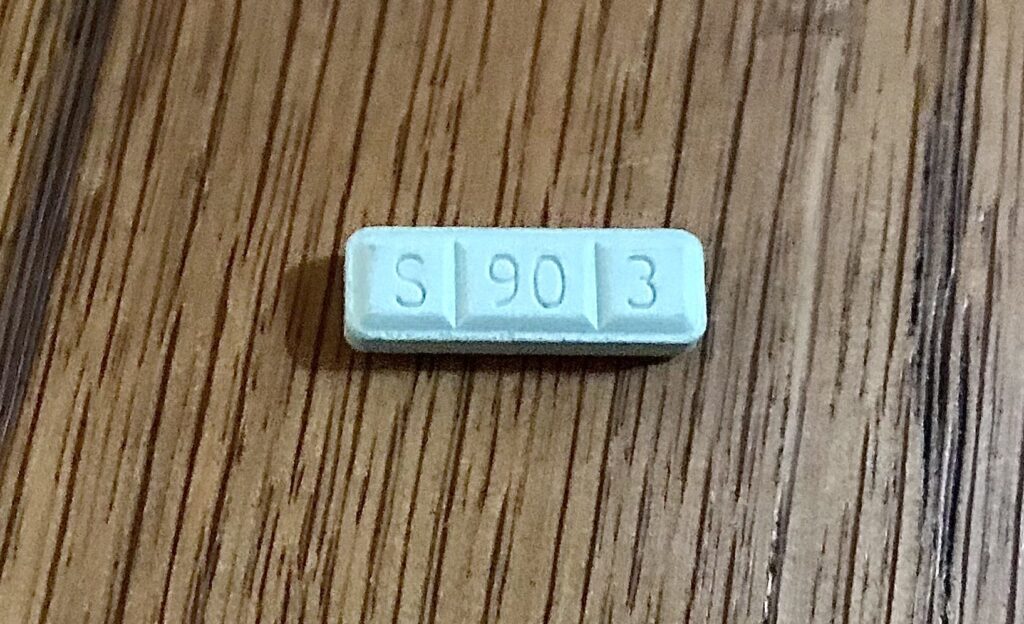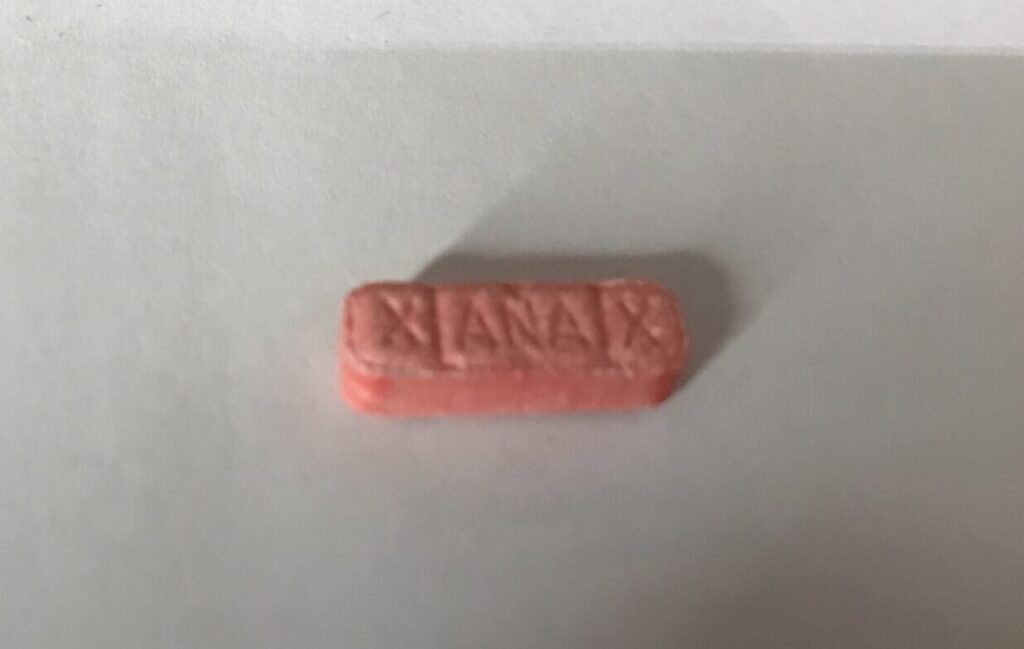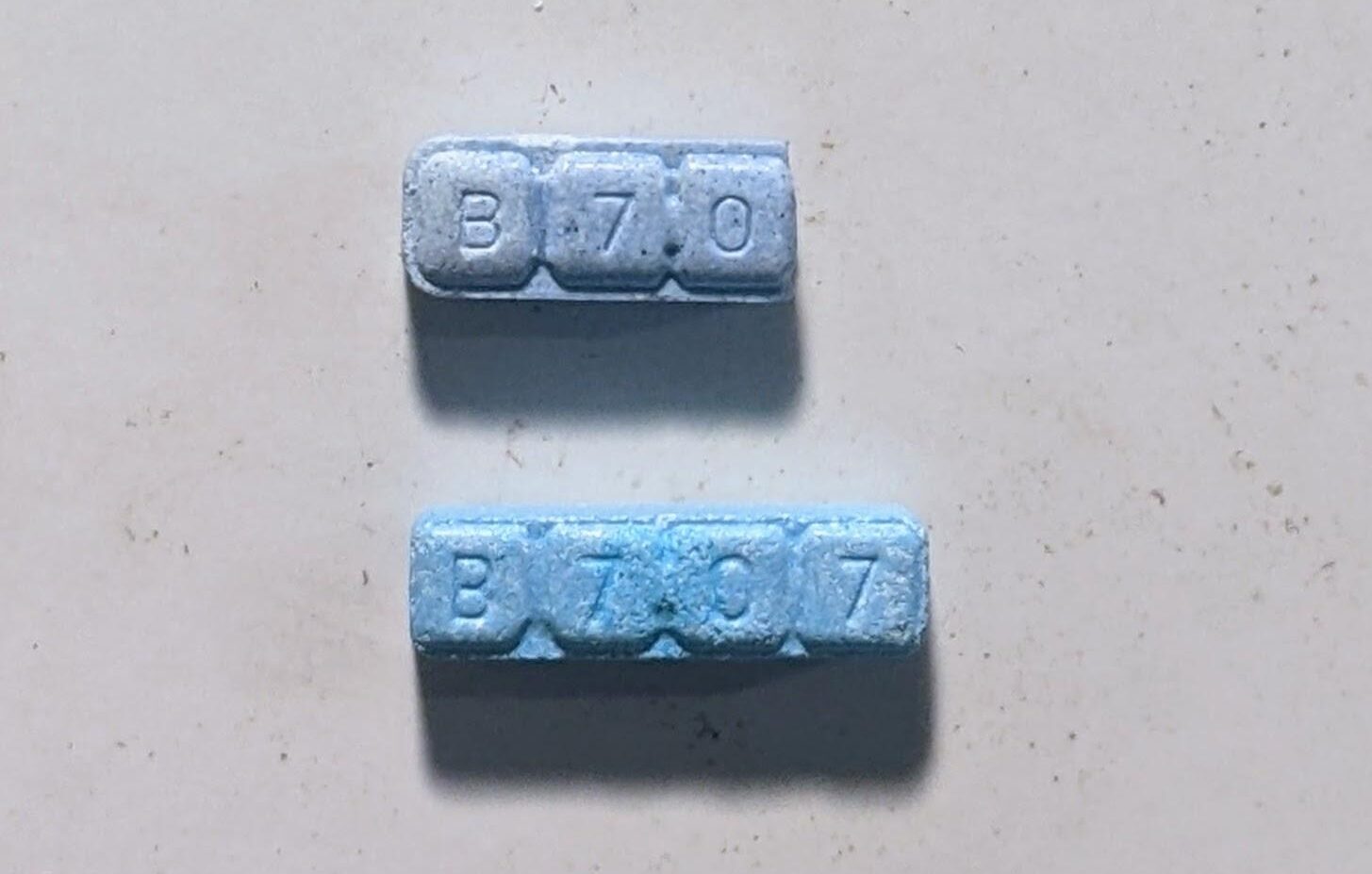A September 1 report from the Centers for Disease Control and Prevention found that overdose deaths involving counterfeit pharmaceutical pills more than doubled in the United States during the COVID-19 pandemic. It’s the first CDC Morbidity and Mortality Weekly Report to focus specifically on counterfeit pills, showing that their role in the drug supply continues to hold the federal government’s interest, if not its comprehension.
The report covers overdose death data from late summer 2019 through the end of 2021. It focuses on unregulated pressed pills that resemble oxycodone (Percocet) and alprazolam (Xanax), the most prevalent in Drug Enforcement Administration seizures. The former are known as the blues, and are made with nonprescription fentanyl.
In 2021, only 35 states were able to produce overdose data from at least 75 percent of their counties; the other 15, and Washington, DC, weren’t included in the report. Of the overdose deaths that were included, 2,437 were linked to counterfeit pill use; 52,331 were not. Illicit fentanyl was linked to 93 percent of counterfeit pill-involved deaths; in 41.4 percent of them it was the only drug involved.
Among those disproportionately represented in the death data were people under 35; people identifying as Hispanic or Latino; and people living in the West.
Death data from county coroners’ offices are already incomplete or inconsistent, but overdose data for counterfeit pill use are particularly messy. To begin with, the determination that counterfeit pills were or weren’t involved “depended largely on scene or witness evidence of pill use.” There also isn’t a reliable way of accounting for pills that were swallowed, so the report includes only deaths believed related to counterfeit pills that were consumed some other way, like injecting or smoking.

“The higher percentage of deaths with evidence of drug use by smoking might reflect recent general shifts from injecting drugs to smoking them in western states or could be specific to counterfeit pill use methods,” the report states. “Injection is often considered the riskiest route of drug use; although there are additional risks inherent in injecting drugs (e.g., bloodborne infections), other routes such as smoking can carry similar overdose risk because of rapid drug absorption.”
It’s odd to characterize the recent shifts from injecting to smoking and counterfeit pill use methods as mutually exclusive—especially in the West, where the CDC found that counterfeit pill-involved deaths tripled in the same time frame that the national rate has doubled.
As the black tar heroin that was more widely available up until the onset of the pandemic was rapidly overtaken by fentanyl pressed pills, many people who’d been injecting heroin needed a consumption method that didn’t hit as hard, to compensate for the more potent supply. Harm reduction guidance broadly recommends smoking as a safer alternative to injection, including for fentanyl.
According to the State Unintentional Drug Overdose Reporting System coding manual, a “vape pen, e-cigarette, or other vaping device … can be used to facilitate smoking drug(s)”—meaning vapes found at the site of an overdose are considered evidence of smoked illicit drugs. It’s not entirely clear whether that suspicion is confirmed by testing the vape’s contents, nor whether the reliance on eyewitness reports means that a vape has to actually be found at the scene to be considered evidence of smoking.

 Top: Pharmaceutical alprazolam. Bottom: Counterfeit pill sold as alprazolam, not that they were trying too hard.
Top: Pharmaceutical alprazolam. Bottom: Counterfeit pill sold as alprazolam, not that they were trying too hard.
Counterfeit alprazolam pills were found to be involved in overdose deaths much less often than the fentanyl-containing counterfeit oxycodone pills. Of the 2,437 deaths included for 2021, only 415 cited cause of death as alprazolam pills; an additional 95 were attributed to a combination of the two. Fake alprazolam pills commonly contained etilozam or flualprazolam—benzodiazepine analogs that are more potent than Xanax—or bromazolam, which is less potent.
Not all counterfeit pills resemble actual pharmaceuticals, but there are some that pretty closely approximate regulated Percocet, Xanax or Adderall. The safest way to distinguish licit pills from illicit ones is via public health forensic drug-checking services, which are gradually becoming more prevalent in the US.
Fentanyl test strips are less informative, but more accessible. If no drug-checking resources are available, the strongest indicator that a pharmaceutical did not come from a pharmacist is often that the etching isn’t as crisp as it is on the real thing.
Top photograph of licit (above) and illicit alprazolam courtesy of Anonymous. Inset photographs courtesy of Kastalia Medrano.





Show Comments